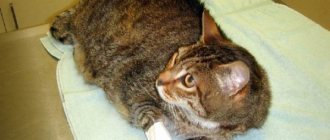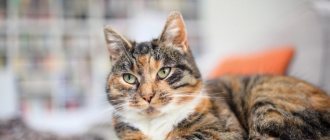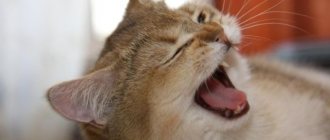How to treat a cold
In the treatment of viral or acute catarrhal rhinitis caused by hypothermia, topical preparations (drops and sprays) are used4:
- Antibacterial and antiviral. They destroy pathogenic microflora and prevent the spread of infection into the auditory and lower respiratory tract.
- Mucolytics. They reduce swelling of the mucous membrane, thin out accumulated mucus and help clear the nose.
- Vasoconstrictors (decongestants). Relieves nasal congestion and eliminates swelling of the mucous membrane. One such drug is Xilong nasal spray. It contains the vasoconstrictor substance xylometazoline and dexpanthenol, which has a regenerating effect. For children from 2 to 6 years old, Xilong Kids spray is provided.
To enhance the therapeutic effect, before using sprays, the nasal passages are washed with aqueous solutions of sea salt.
Inflammation of the trachea
It is also “tracheitis”. It occurs due to many reasons, with the leading one being the effect of too low temperatures. Your cat, just like a person, can get very cold in frosty or chilly weather. Hypothermia contributes to the deterioration of the animal’s body’s defenses, as a result of which the rapid growth and development of pathogenic and conditionally pathogenic microflora begins. The logical result is that the animal breathes poorly through its nose, making grunting, wheezing and wheezing sounds. But the main symptom of tracheitis is cough.
Why is there a problem?
Cough is one of the main symptoms of rhinotracheitis in an animal.
If the kitten does not meow and its respiratory rhythm has changed, then in most cases the problem is associated with pathologies of the respiratory system. Many pulmonary diseases are characterized by copious secretion of saliva and mucus, which the pet often swallows. If a cat is breathing heavily and wheezing constantly, then this indicates a number of pathologies presented in the table.
Read also: A detailed guide to the Kardashian family -
| Disease | Short description | Additional symptoms |
| Rhinotracheitis and calcivirosis | The mucous membranes of the respiratory tract and intestines become inflamed | Heat |
| Diarrhea | ||
| Cough and severe wheezing | ||
| Ulcers on the mucous membranes | ||
| Purulent and mucous discharge from the eyes and nose | ||
| Pneumonia | Inflammatory reaction in the lungs associated with viruses and bacteria | Barking type cough |
| Temperature increase | ||
| Deterioration of general condition | ||
| Bronchial asthma | Chronic inflammation of the airways with narrowing of the pulmonary lumen | Frequently pressing the cat to the floor |
| The animal is breathing hoarsely and coughing | ||
| In advanced cases, the pet suffocates | ||
| Helminthiasis | Associated with the entry of small parasites into the respiratory tract | Vomiting and nausea |
| Breathing with wheezing | ||
| Broken stool | ||
| The pet eats almost nothing | ||
| Cancerous tumors | Accompanied by the proliferation of malignant cells in the respiratory organs | The cat grunts and sniffles when it breathes |
| Changed voice, and sometimes meowing disappears completely | ||
| Shortness of breath and cough with bloody impurities | ||
| Laryngeal edema or laryngospasm | Occurs against the background of poisoning with household chemicals, an allergic or autoimmune reaction | Acute lack of oxygen |
| Restless state | ||
| The cat meows hoarsely and moans often |
The animal may experience difficulty breathing due to the triplication of the skull.
- foreign body entering the throat;
- brachycephalic syndrome;
- pulmonary edema;
- congenital anomalies;
- tracheal collapse.
When a cat has hoarse breathing accompanied by a loud sound, this does not always signal a pathology in the respiratory system. Often a cat grunts and breathes through his mouth due to the following disorders:
- Protrusion of the diaphragmatic hernia. The symptoms are reminiscent of bronchial asthma, with the pet constantly being in one position and breathing heavily.
- Heart diseases. In case of heart failure, the animal rarely develops a cough, and the cat often wheezes and breathes through his mouth. Arrhythmia, myocardosis and myocarditis can affect impaired breathing.
- Severe renal failure. The pathology often provokes pulmonary edema, as a result of which the pet refuses to eat, is constantly in a semi-sitting position and coughs.
Treatment of laryngopharyngeal reflux
Lifestyle changes and diet are the main approach in the treatment of LPR and GERD. The role of drug therapy is more controversial. It is unknown whether asymptomatic patients with incidentally detected signs of LPR require treatment. There are theoretical concerns that LPR may increase the risk of malignancy, but this has not yet been proven. In any case, patients with asymptomatic LPR are advised to follow a diet.
Patients are advised to quit smoking, alcohol, and avoid foods and drinks containing caffeine, chocolate, and mint. Prohibited foods also include most fruits (especially citrus fruits), tomatoes, jams and jellies, barbecue sauces and most salad dressings, and spicy foods. Small meals are recommended.
You should avoid exercise for at least two hours after eating, and refrain from eating or drinking three hours before bedtime.
Drug therapy usually includes proton pump inhibitors (PPIs), H2 blockers, and antacids. A PPI is recommended for six months for most patients with LPR. This figure is based on the results of endoscopic studies (this is the time needed to reduce laryngeal edema), as well as the high percentage of relapse in the case of a three-month course of therapy. Discontinuation of therapy should be carried out gradually.
If therapy with PPIs and H2 blockers is unsuccessful, treatment with tricyclic antidepressants, gabapentin and pregabalin should be considered, since one of the possible mechanisms for the development of reflux is increased sensitivity of the larynx.
In what cases should you contact a veterinarian?
An emergency visit to a veterinarian is required by the appearance of symptoms such as shortness of breath, breathing with an open mouth, temporary cessation of breathing (usually during sleep), poor appetite, apathy, and fatigue.
If your cat begins to snore more often or louder than usual and/or other symptoms (coughing, sneezing, discharge from the nose and eyes) appear, this may indicate a worsening condition that requires consultation with a specialist.
Diagnosis of the main causes of snoring will include the following: chest x-ray; clinical and biochemical blood tests; tests for respiratory infections. In some situations (foreign objects, neoplasms, polyps), additional diagnostics are required: endoscopy; computed tomography or magnetic resonance imaging of the head, cytological and histological examination of neoplasms.
Treatment is primarily aimed at eliminating the underlying cause and is prescribed after a clinical examination and diagnostic procedures. In most cases, it is done on an outpatient basis with the use of medications.
If allergies or asthma are suspected, corticosteroids and antihistamines are prescribed. In the presence of respiratory infections, antibacterial and antiviral drugs are used. In situations with neoplasms, polyps, structural abnormalities of the upper respiratory tract, as well as foreign objects, surgical intervention is necessary. In emergency situations, sedation of the animal and additional oxygen support are required in a veterinary clinic hospital setting.
If your cat is overweight, you should consult a veterinary nutritionist to select the right diet and develop a weight loss program.
When the humidity in the cat’s habitat is low, it is recommended to use a humidifier, which will prevent the mucous membranes of the respiratory tract from drying out. You also need to create a comfortable sleeping place so that the cat can sleep comfortably.
Symptoms that should alert you
Some symptoms require immediate attention. You need to show a kitten or an adult animal as quickly as possible if it has the following signs:
- stuffy nose;
- constant sneezing;
- high body temperature;
- lethargy and apathy;
- ignoring food and drink;
- dry cough;
- itching and redness of the nose;
- enlarged lymph nodes;
- foul-smelling sinus discharge that is yellow, green, or brown;
- conjunctivitis;
- dyspnea;
- cyanosis of the mucous membranes.
Possible diseases and pathologies
When your pet snores constantly, or very often, it may be a symptom of one of the following conditions:
- swelling of the larynx; may be caused by allergies, or the presence of foreign objects in the respiratory system;
- urolithiasis disease; snoring is sometimes accompanied by wheezing;
- the presence of worms, which may even be present in the respiratory system;
- asthma;
- rhinitis;
- pneumonia and bronchitis;
- heart failure; along with wheezing, a cough and blue discoloration of the mucous membranes can be observed;
- respiratory tract infections;
- obesity.
A veterinarian will help the owner determine the cause of wheezing when breathing in a cat.
Normal cat condition
If your feline pet sniffles, but does not express any pain, his behavior has not changed, he plays, eats well, you need to examine the animal:
- if the nasal mucosa is pink, then the body receives enough oxygen;
- there is no discharge from the nose, which means a cold is excluded;
- Light pressure over the entire back will help determine whether there are or are no areas of pain.
Breathing with wheezing may be caused by a deviated nasal septum or obesity, which is not life-threatening.
When your cat sniffles, she also scratches her nose with her paws and sneezes; perhaps she just has an allergy, which will disappear after the allergen is eliminated.
Providing emergency care for a pet
Every cat owner should know the list of warning signs that indicate serious problems with the animal’s health:
- Weak and lethargic appearance.
- Uncontrollable vomiting.
- Dry hacking cough or blood in the sputum.
- Anxious and fearful behavior.
Veterinarians will provide the best care to a sick cat. By trying to cope with the problem on their own, the owners of the furry patient only complicate further treatment. Heart, lung, kidney and brain diseases cannot be treated with traditional methods at home.
In an emergency situation, when the veterinary clinic is far away and you need to act quickly, you can follow the following recommendations:
- A foreign object stuck in the throat can be pulled out with tweezers or your fingers. To do this, the cat opens its mouth wide and looks into its throat. If the object is within sight, you can act.
- An object lodged across the trachea can be shaken out of the animal by grasping the cat by the hind legs and pressing on the diaphragm. If the actions are not successful, you need to urgently take the sufferer to the veterinarian.
- If the owner is sure that poisoning has occurred, before the doctor arrives, the cat should be given a weak solution of potassium permanganate to drink. Gastric lavage is the first aid for poisoning of both animals and people.
How to help your pet depending on the cause of sniffling and grunting?
After identifying the cause of these symptoms and making an accurate diagnosis, the veterinarian will develop a treatment plan. It requires an integrated approach. Therapy is aimed at improving the animal’s condition and relieving signs of the underlying disease. If a four-legged patient has a cough, antitussive drugs (Sinekod, Bronholitin) are used to eliminate it.
For dry cough, expectorant medications (ammonium chloride, Salbutamol) are indicated. When nasal congestion occurs, the nasal passages are washed with saline solution. To relieve inflammation, they resort to rinsing with chamomile decoction. When the listed remedies are powerless, it is recommended to instill any children's drops (Nazivin, Otrivin, Vibrocil).
The main treatment depends on the diagnosis:
- For helminthic infestations, a course of antihelminthic drugs (Milbemax, Stronghold) is indicated.
- When an allergy is diagnosed, its symptoms are relieved with antiallergic drugs (Suprastin, Tavegil). It is important to identify and eliminate the source of the allergic reaction, otherwise treatment will be useless, and attacks of this disease will appear again and again.
- For infectious diseases, antibiotics or antiviral agents are prescribed.
- Symptoms of heart failure are eliminated with the help of glycosides and potassium-containing medications.
- For injuries of the chest, spine, and ribs, immobilization, antibiotic therapy, and painkillers are indicated.
- For obesity, a diet is prescribed.
- Inflammatory diseases are treated with anti-inflammatory drugs and broad-spectrum antibiotics (Streptomycin, Erythromycin).
- When diagnosing asthma, glucocorticosteroids and bronchodilators are indicated.
Preventive actions
To prevent the listed diseases, one of the symptoms of which is sniffling and grunting in a pet, the following safety measures must be observed:
- Carry out vaccinations and deworming in a timely manner. Such measures will help avoid the development of infectious diseases and the appearance of parasites.
- If your pet has an allergy, eliminate its sources in the apartment and avoid the cat’s contact with allergens outside the home.
- Avoid overeating. Do not leave uneaten food in the bowl. If you gain excess weight, it is recommended to switch your pet to a low-calorie diet. Sterilized cats and neutered cats must be fed special food.
- Avoid hypothermia and overheating of the pet and drafts.
- Increase the animal’s immunity through the regular use of vitamin and mineral complexes, agreed with the veterinarian.
- Conduct regular preventive veterinary examinations to promptly identify existing diseases.
- Start eliminating signs of pathologies immediately after they are identified.
Source
Diagnostic methods
Rhinitis is diagnosed by nasal congestion, discharge and sneezing. Diagnosing the root causes is becoming more difficult:
- You need to collect a complete medical history, which is almost impossible if you adopted a cat from a shelter or adopted it on the street.
- If the symptomatic picture and tests are not enough, the veterinarian conducts a full examination (the cat is first placed under anesthesia).
During the examination, the veterinarian must ensure that:
- The cat does not have congenital defects in the structure of the skull and nose.
- There is no fistula in the septum between the nose and mouth.
- There are no foreign objects in the cat's nose.
Because nasal congestion can be caused by swelling and injury, your doctor may recommend an X-ray or MRI.











